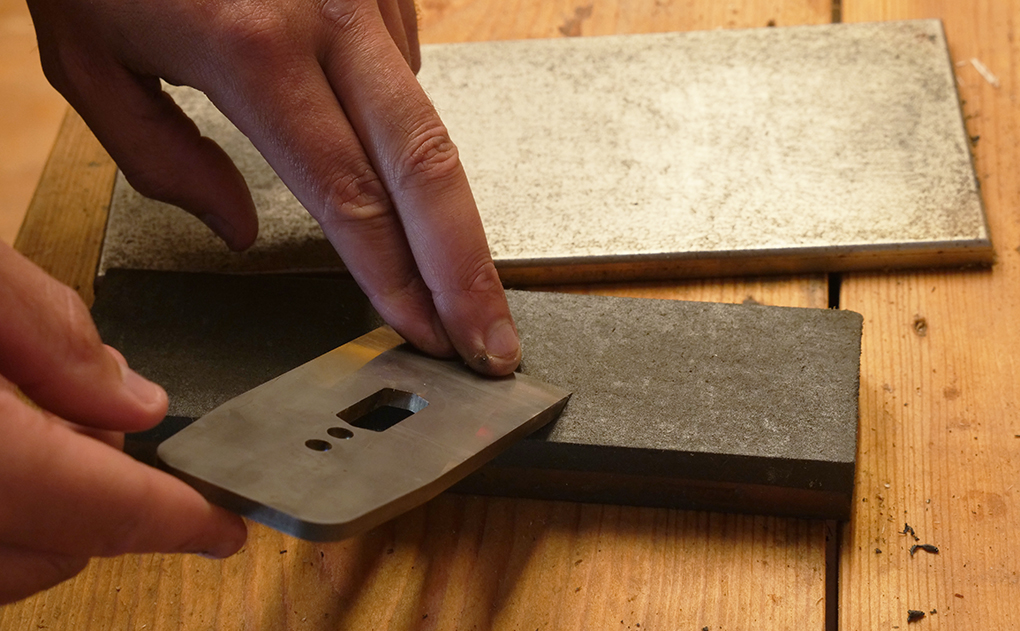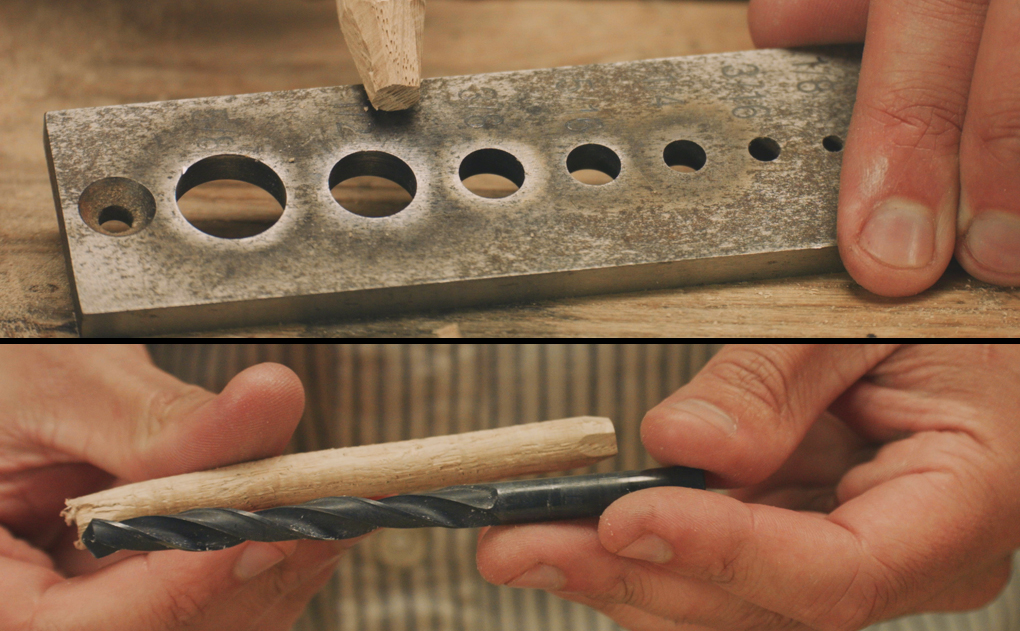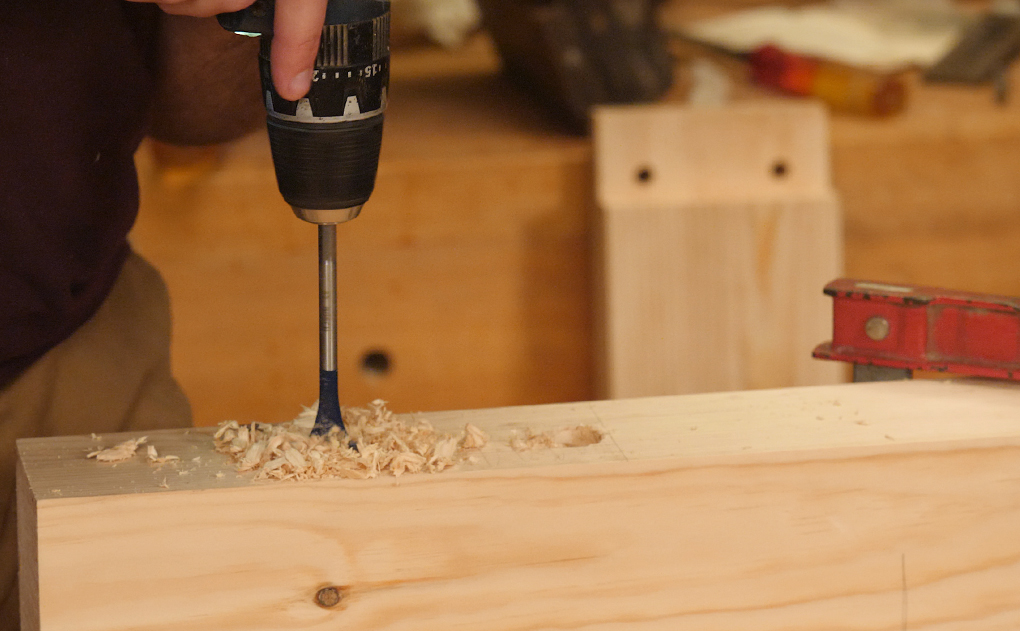

Bevel up planes have thick irons. If it’s made of softer type steel – o1 and such, then you can still sharpen with a cheap oil stone.
You can sharpen owt on the humble old oil stone, but that doesn’t mean that you’d want to.
In our sharpening trilogy, I go on quite a bit about how your choice of tool will tell you what kind of sharpening method and set up you’ll need. I’m very firm on how effective oil stones are, but also that this is only the case when you’re dealing with O1 (or the softer type) steels and preferably blades which are thin.
So what if you want to tart up the edge on a great big thick iron made of O1?
Is an oil stone up to it?
This is a question we get asked a lot, and in particular with regards to those extra thick irons that you find in a bevel up plane.
The simple answer is yes. This is perfectly possible.

Thick irons such as the one on the left require a different approach to sharpening than the one I use everyday in my Stanley (right). If the thick iron is made of softer steel (O1 or similar) then it can still be tackled at an oil stone – see the method below.
But the real trick would be in the discipline. You would have to make sure that the edge doesn’t run away with you. With a strict routine I actually don’t believe that sharpening that thick iron would be all that troublesome.
However, if you do push a few sloppy sharpens and ignore your protocol you could quickly find yourself in a spot of bother.
This is all because accurate sharpening requires the removal of such a small amount of material.
Use an accurate and disciplined routine and you’ll be sharp in no time.
But if you let your edge get in to a state, or cock things up you’ll be looking at a lot of steel to remove to reestablish. At that point it’s not something you’d want to tackle at the oil stone.
Sharpening Thick O1 on Oil Stones – The Method
If you’d like to sharpen a thick O1 iron at an oil stone then you’ll want to start with a flattish stone and a factory new or reground iron.
The process itself will be the same for every sharpen, no exception.

Registering the primary bevel
The Primary Bevel
Due to the thickness of the iron, the primary bevel will register on the stone and act as its own guide.
Press the bevel down on the stone, skewing it so that it fits fully on the surface. Rub it back and forth with care until you can see its evenly abraded on the entire surface of the primary bevel.

Setting the guide for the secondary bevel
The Secondary Bevel
For the secondary bevel you’ll want to use a guide.
Where I’d always free hand with a thin iron, in this scenario we’re depending on things to be dead precise. The guide will save you time here by ensuring you can remove as little material as possible.
This accuracy is even more important with the bevel up plane as the cut will respond to the slightest change in bevel angle.

Aim to remove as little material as possible while sharpening the secondary bevel

Create the small secondary bevel on the fine side of the stone.
Now move to the finer side of the stone.
Rub about as little as possible, until you get the slightest burr on the back.
If you need a little camber then this is the time to do it.

Removing the burr

Strop to finish
Knock your burr off and have a light strop.
So there’s nowt special there.
The important part though is when you resharpen, without question you need to re-establish the primary bevel every time. Then add in the tinniest of secondary bevel. If the secondary bevel has a camber then you don’t need to fully remove that with the primary.

Remember there’s a million ways to sharpen, and I use many depending on the tooling and situation at the time.
This is just one very specific example that might get you out the shite if you have limited kit.
Sharpening efficiently is a discipline. And it’s vital to match your methods to your steel types and to your stones.
Read up more about sharpening:
For a complete guide to sharpening your edge tools, including the set up for harder steels, methods, routines, angles, cambers and all the other scientific maths, have a browse of our ‘Get Sharp’ video series.




